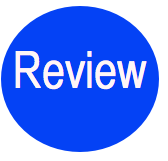|
| |
Review of Teach, Reflect, Learn: Building Your Capacity for Success in the ClassroomReviewed by Thomas Hansen
 Author: Pete Hall & Alisa Simeral Author: Pete Hall & Alisa SimeralPublisher: Association for Supervision and Curriculum Development ISBN: 978-1-4166-2010-5 Publication Year: 2015 Pages: 178 Hall and Simeral set forth three major stages in helping teachers reflect on what they are doing in an effort to improve instruction in the classroom. The authors hope to help teachers learn how to reflect on a regular basis as part of the self-assessment process in which teachers should engage. Included are many scenarios of teachers and their comments about why things are working—or not—in their classrooms. As in most of my reviews, I try not to give away all the content. Here, I will list the names of the nine main chapters of the book: If You Can Read This, Thank a Teacher; Reflections on Self-Reflection; Reflective Self-Assessment Tool; The Continuum of Self-Reflection; The Unaware Stage: What Does Unaware Mean, Anyway?; The Conscious Stage: Is the Knowing-Doing Gap Real?; The Action Stage: What Happens When Art and Science Collide?; and The Refinement Stage: Smoothing Out the Rough Edges. Having attended a Jesuit institution for my Ph.D. in Education, I will have to admit I am fully aware of reflection as a major component of the teaching-improvement process. In most all of my courses, I had to reflect on what I had said, written, taught, or done. This was a very interesting reminder of the reflection process many successful and hard-working educators already use in one form or another. Most effective teachers will admit they are always trying to improve their skills, whether it is coming up with better ways to explain a phenomenon or inventing better ways to let students come to their own understanding of how a process works. Good teachers also probably apply it to their writing, research and service. At least that is what the literature says. Becoming more efficient is important, and this book has some interesting hints about looking at learning situations with different lenses. I recommend the book as a sort of self-study book, especially for teachers who want to consider some alternatives to learning about new methods or new materials. Sometimes it has more to do with looking directly at how we as individuals do our work. Once we have considered that, we can look outward. I would recommend this text also in group settings where there are several different short paperbacks and small groups get to choose a book to discuss. The readings in this and similar shorter texts can be a good starting point for considering what it is we are doing in the classroom. Enjoyable and fruitful also are the stories of what other teachers use for methods and materials. In a recent professional development session I worked on, several of the teachers said, “We never have enough time to simply talk to each other about what we are doing in our classrooms.” I think this is a good message for principals and others charged with PD and other sessions for teachers. Helping them to reflect can be facilitated by books like this one by Hall and Simeral. Thomas Hansen, Ph.D., is an Independent Consultant with a variety of roles in Education and Advocacy. | |
| ITBE Link - Summer 2015 - Volume 43 Number 2 |